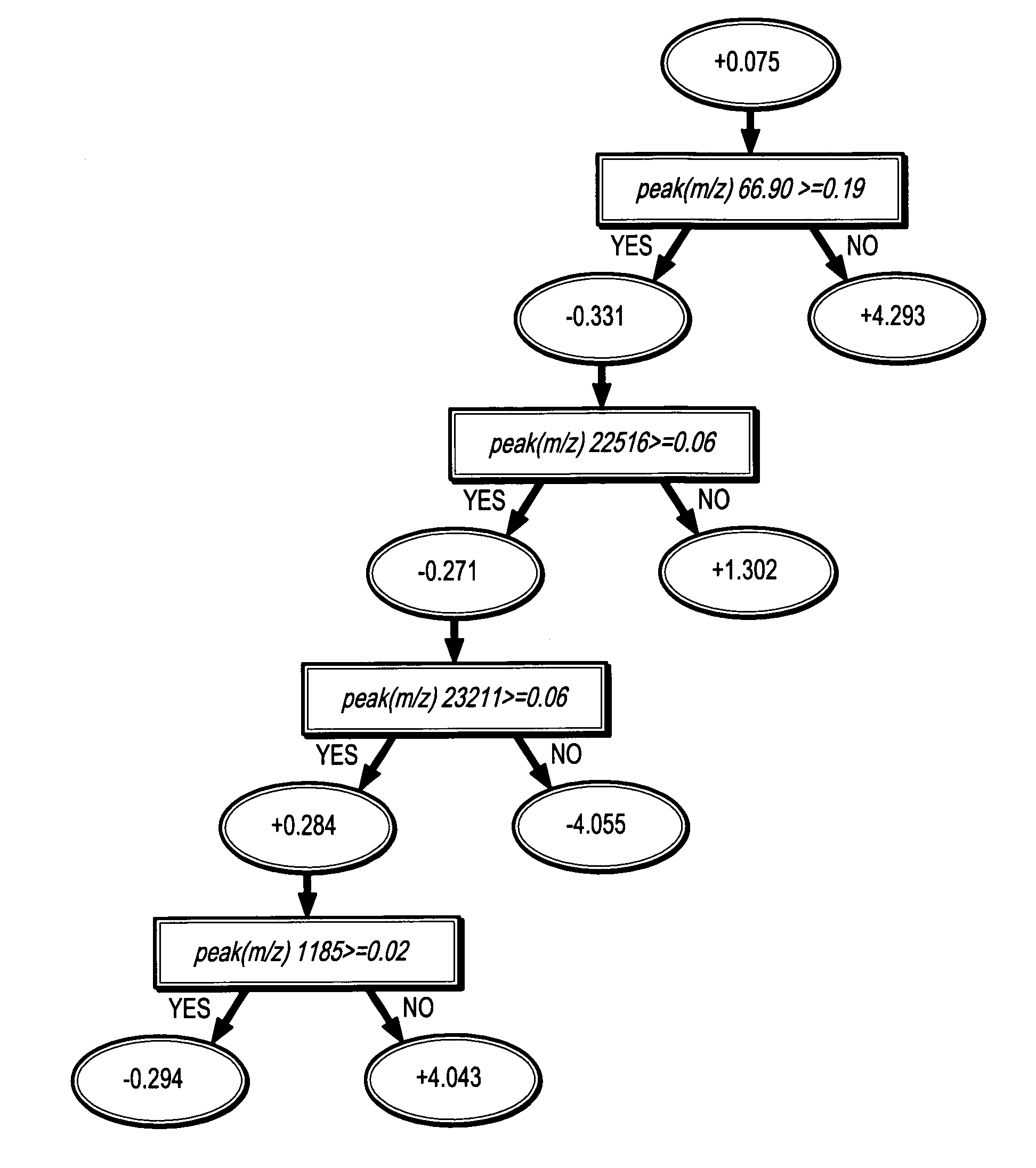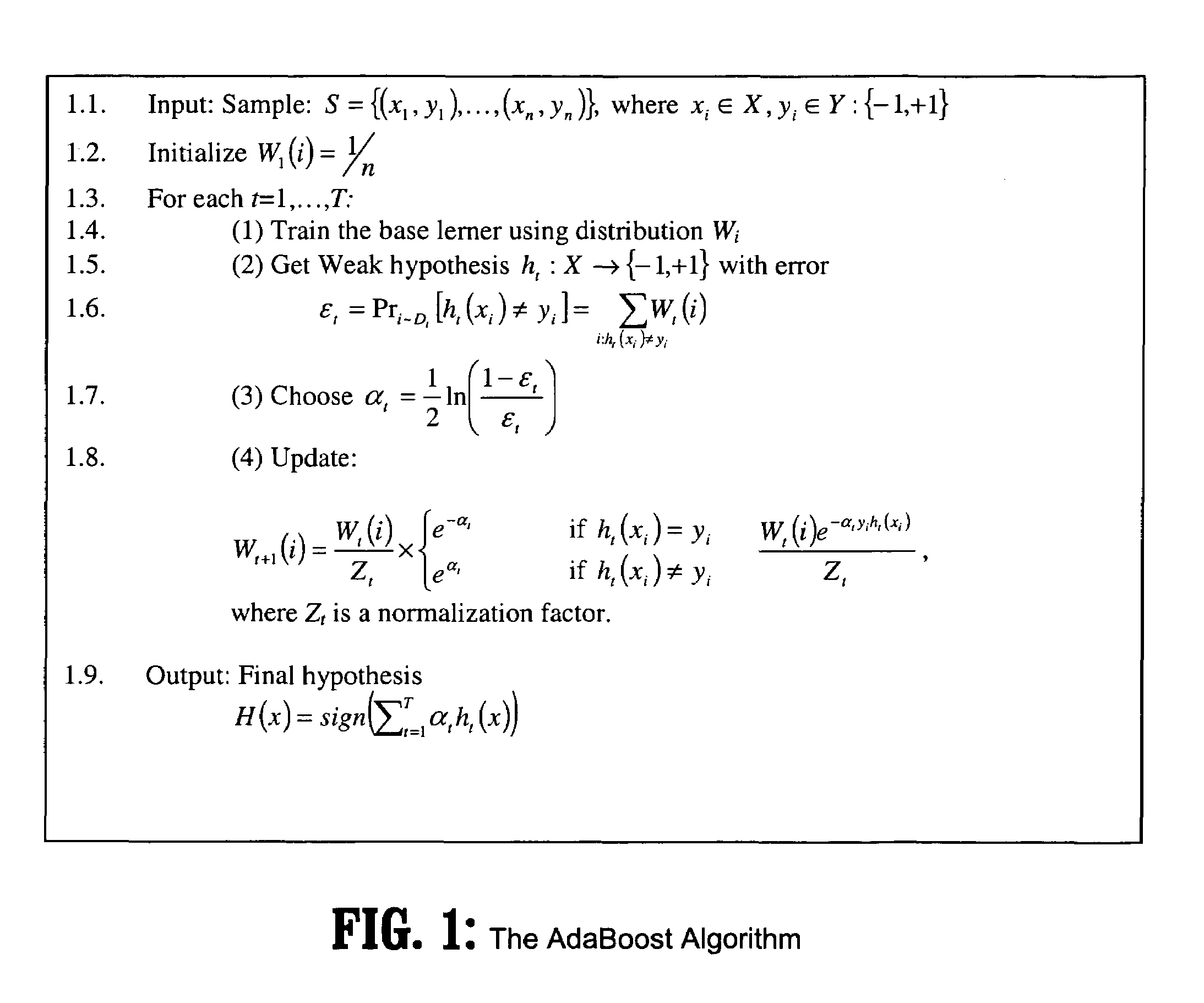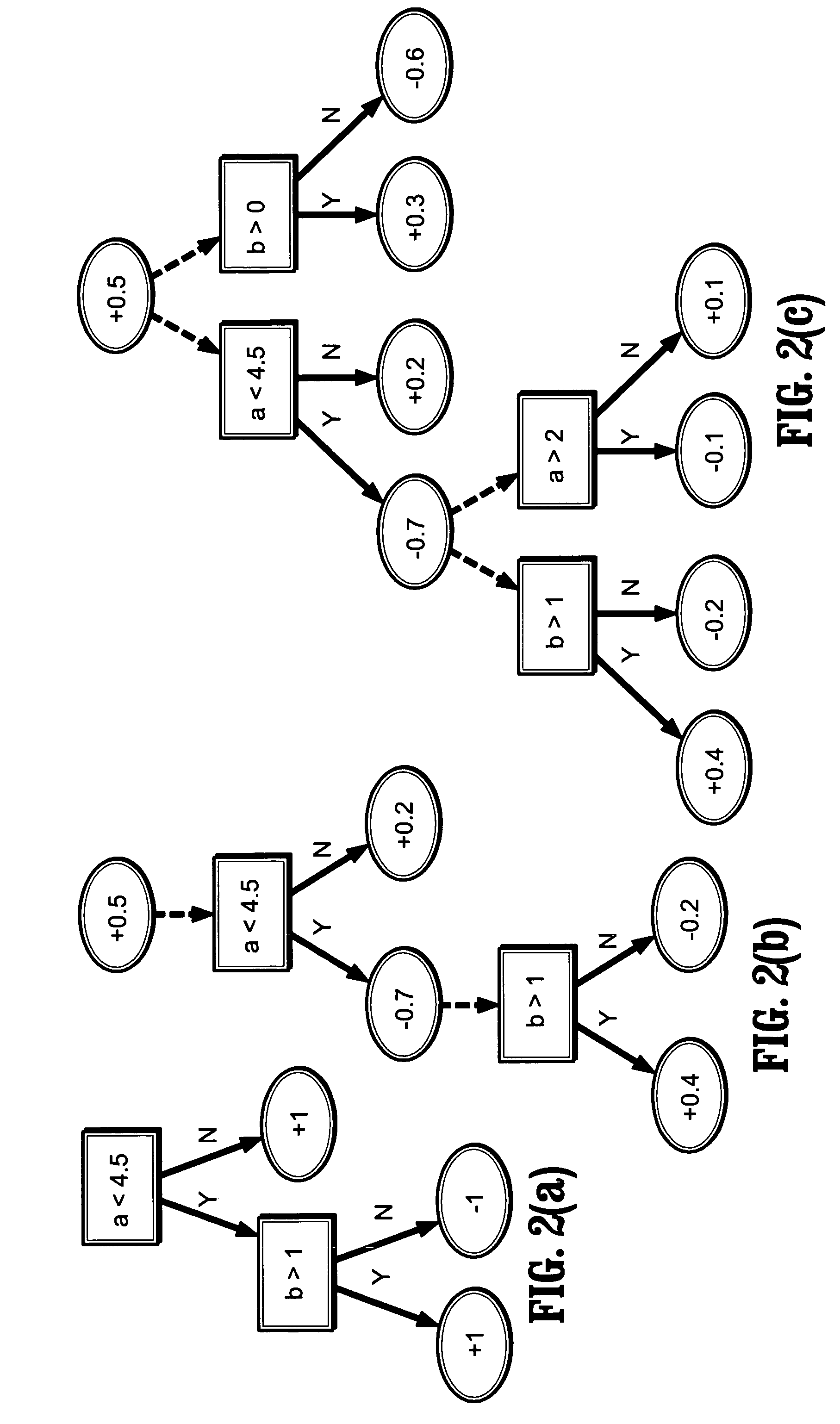System and method for automatic molecular diagnosis of ALS based on boosting classification
a technology boosting classification, applied in the field of automatic molecular diagnosis of als based on boosting classification, can solve the problems of patients in the later stages of the disease becoming totally paralysed, losing the ability of the brain to initiate and control muscle movement, and unable to fully paralyze patients, etc., to improve the classification accuracy of any classification method and be easy to interpret.
- Summary
- Abstract
- Description
- Claims
- Application Information
AI Technical Summary
Benefits of technology
Problems solved by technology
Method used
Image
Examples
Embodiment Construction
[0029]Exemplary embodiments of the invention as described herein generally include systems and methods for a new diagnostic method based on boosting to improve classification accuracy of ALS disease data obtained from different SELDI MS (surface enhanced laser desorption ionization mass spectrometer) experimental procedures. A method according to an embodiment of the invention generates classification rules, which are simple and easy to interpret, identifies most discriminate features, which can be utilized as biomarkers for diagnostic purpose, and provides a measure of prediction confidence. Cross-validation and ROC analysis results indicated that good prediction capacity was obtained based on SELDI results through WCX procedure, although SAX2 and IMAC SELDI procedures did not provide sufficient discriminate information for ALS patients.
[0030]Boosting is a general method for improving the accuracy of any given learning algorithm. AdaBoost solved many practical difficulties of earli...
PUM
 Login to View More
Login to View More Abstract
Description
Claims
Application Information
 Login to View More
Login to View More - R&D
- Intellectual Property
- Life Sciences
- Materials
- Tech Scout
- Unparalleled Data Quality
- Higher Quality Content
- 60% Fewer Hallucinations
Browse by: Latest US Patents, China's latest patents, Technical Efficacy Thesaurus, Application Domain, Technology Topic, Popular Technical Reports.
© 2025 PatSnap. All rights reserved.Legal|Privacy policy|Modern Slavery Act Transparency Statement|Sitemap|About US| Contact US: help@patsnap.com



